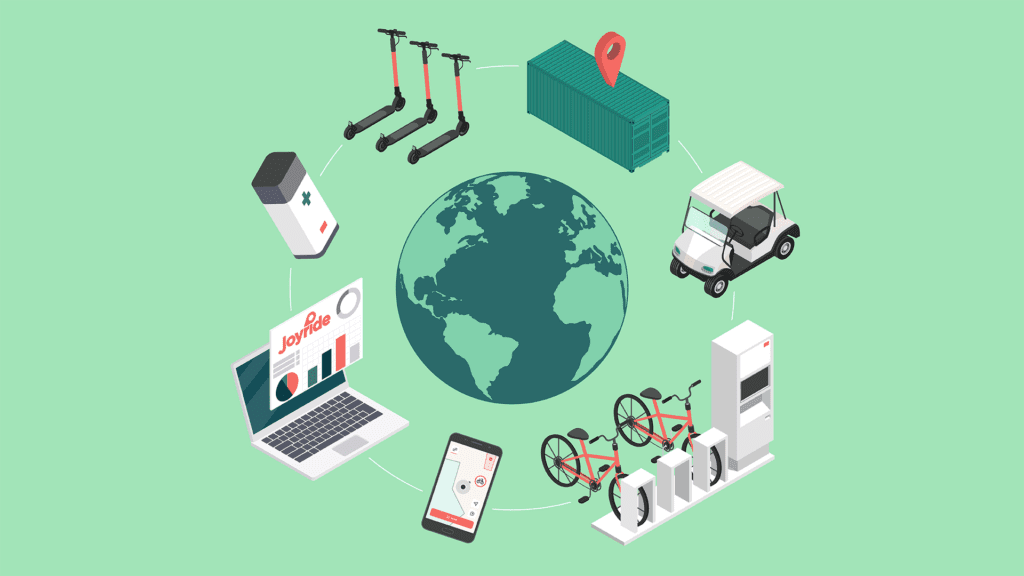In an industry built on the very idea of sharing, it’s no surprise that members of the micromobility community are still finding ways to successfully and safely congregate. Late last month, we virtually gathered with more than 3,000 entrepreneurs, investors, policymakers and enthusiasts at the inaugural Micromobilty World conference, which filled three days with thought-provoking online discussions, data debriefings and networking opportunities. With many topics circulating the airwaves, the focus on the future of cities particularly stood out. If you didn’t have an opportunity to check out Micromobility World, here’s a recap of two main narratives that are coming to define our fast-paced universe:
Cities are embracing micromobility as an alternative to mass transit amid the pandemic
Car-free streets were the big story of 2020, as cities were quickly forced to transform their roads in order to accommodate more cycling and walking. Astonishing bike sales have driven home the value of open streets, and many experts believe the temporary measures can be everlasting in many places. Among them is urbanist Janette Sadik-Kahn, a partner at Bloomberg Associates and the former New York City Transportation Commissioner. At Micromobility World, Sadik-Kahn spoke about what a post-vaccine era will look like for cities, citing a mix of in-person working environments and work-from-home scenarios, as well as the rise of the “15-minute city,” where basically everything a person needs (work, amenities, schools, etc.) is within a 15-minute radius.
“It’s a buzz word, yes, but a lot of cities were built during the car boom where everything was spread out. This model threatens the planet. The smartest innovation of this century is building a city where you don’t have to drive in the first place,” believes Sadik-Kahn. “We want to recreate the idea of living, working and playing within 15 minutes through a combination of walking, biking/scootering and transit.”
This idea has already taken off in Paris, but many U.S. cities like L.A., Nashville and Salt Lake City have a long way to go. To that end, Sadik-Kahn says there are opportunities to create micro-clusters where people can drive and park and then continue their journeys by foot, transit or micromobility systems. In fact, a recent report from transportation management platform Populus indicates that public sector transit agencies can harness much potential from innovative mobility-as-a-service (MaaS) solutions from private companies. In addition to making it easier for people to get places, Populus believes cities’ investments in MaaS will ultimately help manage micromobility permits and parking issues.
“I’m pulling for e-scooter companies to help connect people to transit and make shorter trips possible. We already saw how bikes came to the rescue in 2020. Transit is facing challenging headwinds. Public transit ridership is down by 70% in New York City and by 90% in San Francisco,” Sadik-Kahn says. “Cities aren’t going to recover unless people can get where they need to go with more options of how to get there.”
According to Harvard Kennedy School Fellow David Zipper, cities will bounce back, but they may look a little different. Zipper believes people will likely be amenable to longer commutes if they go to work only a few days per week. “Now, millions of commutes are up for grabs and the question is are people going to adopt new ways to get where they need to go? Cities have an opportunity,” Zipper says, citing many Czech municipalities that recently offered free micromobility rentals. “Sending postcards to residents with free passes and customized bike routes is a way to get people downtown seamlessly.”
Expect more R&D spending on safety and parking technology for shared operators
If cities are going to embrace micromobility as both an alternative and complementary means to public transit, then shared operators have a responsibility to make sure their vehicles are well-received. Micromobility parking continues to be a hot topic within the industry, and Micromobility World was no different.
According to Neptune Scooters founder and CEO Forrest North, clutter is a main challenge for e-scooter companies. He believes a dockless system, while oftentimes convenient, contributes to clutter and impacts accessibility in certain neighborhoods, thereby preventing 10x growth the industry is truly capable of achieving. “Using multi-docking systems to park and charge scooters will narrow our footprint and eliminate spacing issues,” North says.
Remote repositioning will also help make that happen. Announced during the conference, a new partnership between Tortoise, Segway and Spin will bring a teleoperations pilot to Boise, Idaho. Using Tortoise’s repositioning software, Segway’s new three-wheeled vehicles can be moved from illegally parked locations (or blocked crosswalks and handicapped spaces) to designated areas at a speed of five miles per hour. The goal is also to move scooters from low-demand areas to higher trafficked ones, increasing the likelihood of usage. “This is futuristic technology, but it’s remote-controlled instead of being entirely autonomous. We use a laptop and Xbox controller to speed-drive the scooters from A to B,” says Tortoise founder Dmitry Shevelenko, whose repositioning software already integrates with Joyride’s platform. “The scooters follow native routing and know where to go. It’s like a videogame, but this level of repositioning has a human element. It will set the stage for autonomous driving over time.”
In the meantime, cities will be faced with subsidizing micromobility parking initiatives. According to Swiftmile co-founder and CEO Colin Roche, the charging solutions company is a big fan of public-private partnerships. “Cities have to invest in infrastructure. Micromobility 1.0 was defined by the dockless model and it was polarizing,” Roche says. “Now, we’re in Micromobility 2.0, where the streets are being reimagined, private ownership of e-bikes is skyrocketing and everyone is adopting these vehicles. Cities should be subsidizing docking stations just like they do with bus stops if we really want to get people out of cars.”
At Joyride, we really want to get people out of cars. And we want to enable micromobility operators to make that happen with the platform they need to launch and scale their businesses. Find out more about our turnkey solutions, including hardware fulfillment and docking station integrations, by contacting us here.






